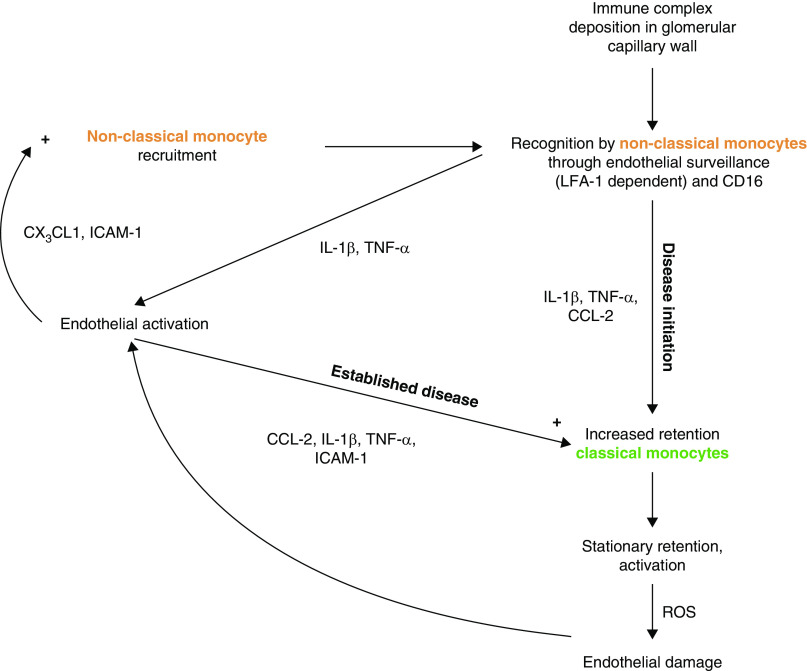Figure 7.
Working models proposes that non-classical monocytes orchestrate the inflammatory response to immune complex formation within the glomerulus. In summary, our data suggest non-classical monocytes survey glomerular endothelium via LFA-1 and during NTN, encounter immune complexes via CD16. Non-classical monocytes become activated and secrete inflammatory mediators (e.g., TNFα), which we propose then activates the endothelium to increase adhesion molecule (e.g., ICAM-1) and chemokine (e.g., CX3CL1) expression, which in turn recruits more non-classical monocytes. A subsequent wave of classical monocyte retention occurs at day 6 NTN, which we propose may cause endothelial damage through the production of ROS. As classical monocyte infiltration into the glomerulus coincides with the onset of proteinuria, we propose this subset is important in mediating a sustained inflammatory response within the glomerulus that ultimately results in glomerular damage, crescent formation, and disease progression.

